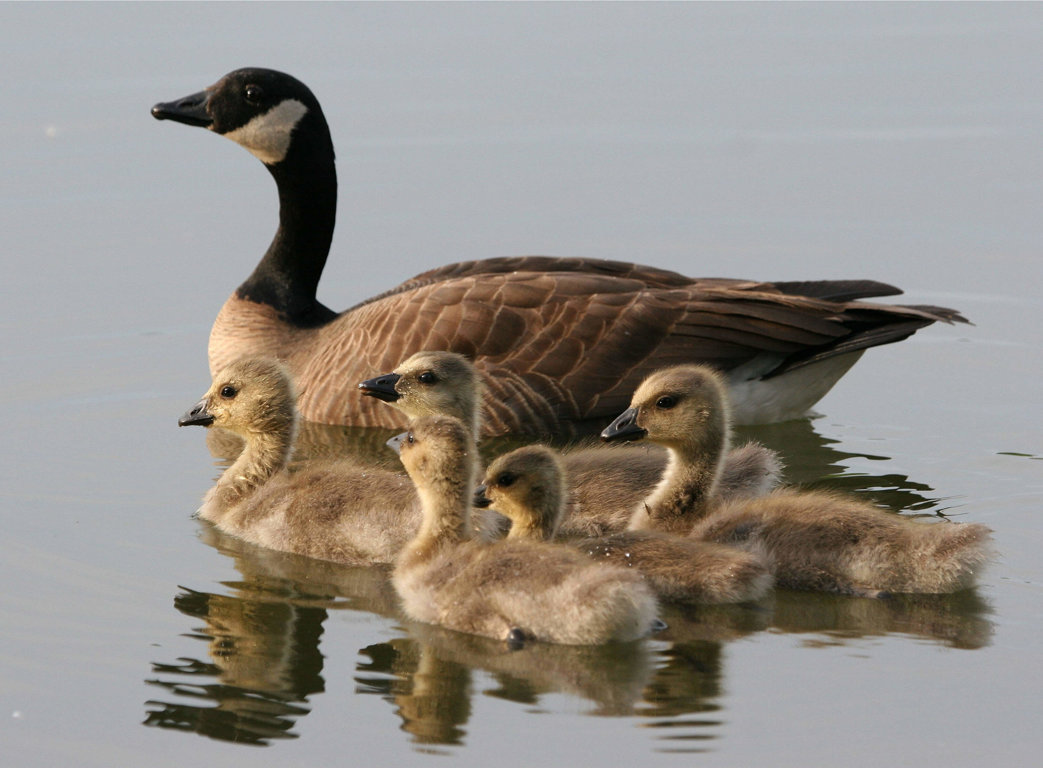Geese
April 8, 2025 at 2:15 pm

Goose is the name for a considerable number of birds, belonging to the family Anatidae. This family also includes swans, most of which are larger than geese, and ducks, which are smaller.
True geese are medium to large birds, always (with the exception of the Néné) associated to a greater or lesser extent with water. Most species in Europe, Asia and North America are strongly migratory as wild birds, breeding in the far north and wintering much further south. However, escapes and introductions have led to resident feral populations of several species.
A pair of geese will get together to raise a family and, for the most part, will stay together the rest of their lives (up to 25 years), raising new families each year.
One of the most distinguishing characteristics of geese is that they form a giant "V" across the sky. This amazing trick actually helps each bird fly further than if flying alone. When a goose falls out of formation, she will feel the drag and move quickly back into formation to take advantage of the lifting power of the bird in front of her. When the lead goose gets tired, he rotates back into formation leaving another goose in the front position. They even honk to encourage those up front to keep up their speed.
Geese have very strong affections for others in their group (known as a gaggle). If one in the gaggle gets sick, wounded, or shot, a couple of others may drop out of formation and follow the ailing goose down to help and protect him.
They try to stay with the disabled goose until he dies or is able to fly again, then they catch up with the group or launch out with another formation.
Much of a goose's time is spent foraging for food, most of which is obtained by grazing. All geese eat an exclusively vegetarian diet.
They honk loudly and can stretch their long necks out to great length when scared or threatened.
Ducks and geese are wild animals, but they have domesticated counterparts who are raised for their eggs and meat, down and feathers. They're less commonly known as farm animals, yet they can certainly fall within this category.
Geese have been domesticated for centuries. In the West, farmyard geese are descended from the Greylag, but in Asia the swan goose has been farmed for at least as long.
Geese tend to lay a smaller number of eggs than ducks. However, both parents protect the nest and young, which usually results in a higher survival rate for the young geese, known as goslings.
A group on the ground is called a gaggle. When flying, a group of geese is known as a wedge or a skein.
